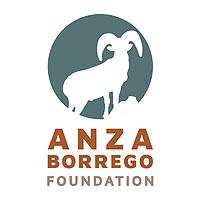Securing the Future: Anza-Borrego Desert State Park’s Commitment to Endangered Species Management
Written by: Danny McCamish, Senior Environmental Scientist Colorado Desert District California State Parks
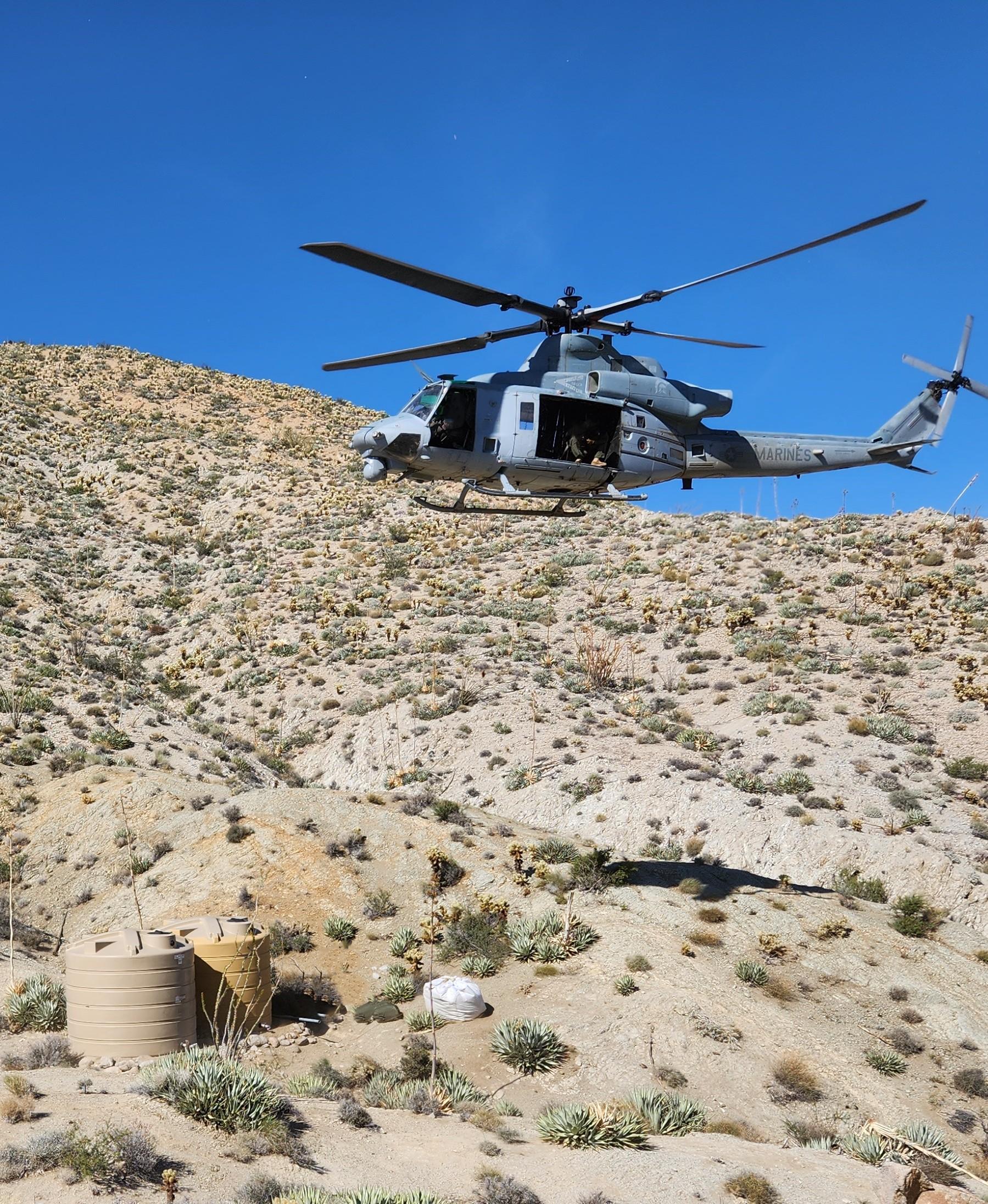
In an extraordinary collaborative effort, Anza-Borrego Desert State Park (ABDSP) is happy to report continued efforts towards the ongoing conservation of the endangered and titular Borrego or Peninsular Bighorn Sheep, Ovis canadensis nelsoni. Thanks to a generous donation from Sycuan Casino and the Sycuan Band of the Kumeyaay Nation, alongside key partnerships with the California Department of Fish and Wildlife (CDFW) and over 30 participants consisting of volunteers from the California Chapter of the Wild Sheep Foundation, Backcountry Hunters and Anglers Armed Forces Initiative, and the United States Marine Corps and ABDSP Natural Resources Management and CDFW Biologists – teams from each collaborative group, successfully completed maintenance replacement of four 2,500 gallon endangered species management “rain-catchment” tanks from Nov 4-6th, 2023 within ABDSP.
Sycuan Casino and the Sycuan Band of the Kumeyaay Nation’s substantial donation to Anza-Borrego Desert State Park and the Anza-Borrego Foundation paved the way for this ongoing endangered species conservation management effort, providing the necessary funds for all the water tank purchases, showcasing the positive impact that public-private partnerships can have on preserving our delicate desert ecosystems and promoting conservation.
This ABDSP and CDFW group management action focused on the scheduled 20-year replacement of two historic “water catchment” wildlife-guzzler seasonal water systems within Anza-Borrego Desert State Park. This initiative aligns with the United States Fish and Wildlife Recovery Plan for Bighorn Sheep in the Peninsular Ranges, California (2000), emphasizing the critical role of providing sustainable and monitored seasonal water sources for the Peninsular Bighorn Sheep.
These two specific wildlife “guzzler” catchment tanks that were replaced, strategically located near “Whale Peak” and “Harper Flat,” are part of a larger network of backcountry seasonal wildlife water guzzlers located within ABDSP.
These endangered species-management replacement water sources, located in remote sections of ABDSP, were mainly installed in the 1980s to provide “seasonal” water availability in a drying desert landscape. These seasonal guzzler systems continue to play a pivotal role in Endangered Borrego recovery.
Functionally, these guzzler system locations and maintenance needs are monitored regularly by ABDSP and CDFW Natural Resources staff. The catchment and guzzler systems are turned “off and on” seasonally by ABDSP and CDFW employees. Drinking systems are turned “off” during the seasonally “rainy” winter and spring months to allow for catchment and retention of seasonal rain in the water tanks to use during the “hot” or dry summer and fall months when the guzzlers are seasonally turned “on” to provide an available summer water resource location. The guzzler box provides the tank-stored water through an attached “self-refilling wildlife drinker box” for the local wildlife, particularly the endangered bighorn sheep, to drink during and within the driest parts of the Anza-Borrego Desert State Park summer. Ensuring the longevity and functionality of these replacement water systems are paramount, along with ongoing monitoring and ecosystem studies, to the continued Bighorn sheep management goals and the survival and well-being of this iconic species within A.B.D.S.P.
One of the standout contributions to this project came from an unexpected source – the United States Marine Corps. In a collaborative effort involving volunteered helicopter operations and flight crews, U.S. Marines from Marine Light Attack Training Squadron 303 (HMLAT-303), using two UH-1Y helicopters from HMLAT-303, known as “Atlas,” played a crucial role in removing old water tanks and transporting and installing the new multiple 2,500-gallon water catchment tanks in remote areas, employing “long-line external lift capabilities” that were required due to the challenging terrain and remote guzzler site locations. In addition to replacing the water guzzlers, the Marines assisted in retrieving tracking collars from deceased bighorn sheep to contribute to ongoing wildlife population monitoring.
The operation also served as valuable real-world training for the Marines, requiring precision, communication, and adaptability in executing nonstandard procedures.
The collaborative efforts of the Marine Corps volunteers from the Backcountry Hunters and Anglers Armed Forces Initiative and the California Chapter of the Wild Sheep Foundation underscore the importance of community involvement in conservation projects. These partnerships exemplify the idea that safeguarding our natural treasures requires a collective commitment.
As we celebrate the successful completion of this endangered species management action, it serves as a reminder that the future of our desert (and, really, all of our desert ecosystem) relies on the shared responsibility of individuals, organizations, and conservation groups. Anza-Borrego Desert State Park continues to stand as a beacon of research, conservation, recreation and wilderness values – demonstrating what can be achieved when diverse stakeholders unite for a common cause – preserving our unique and endangered wildlife.
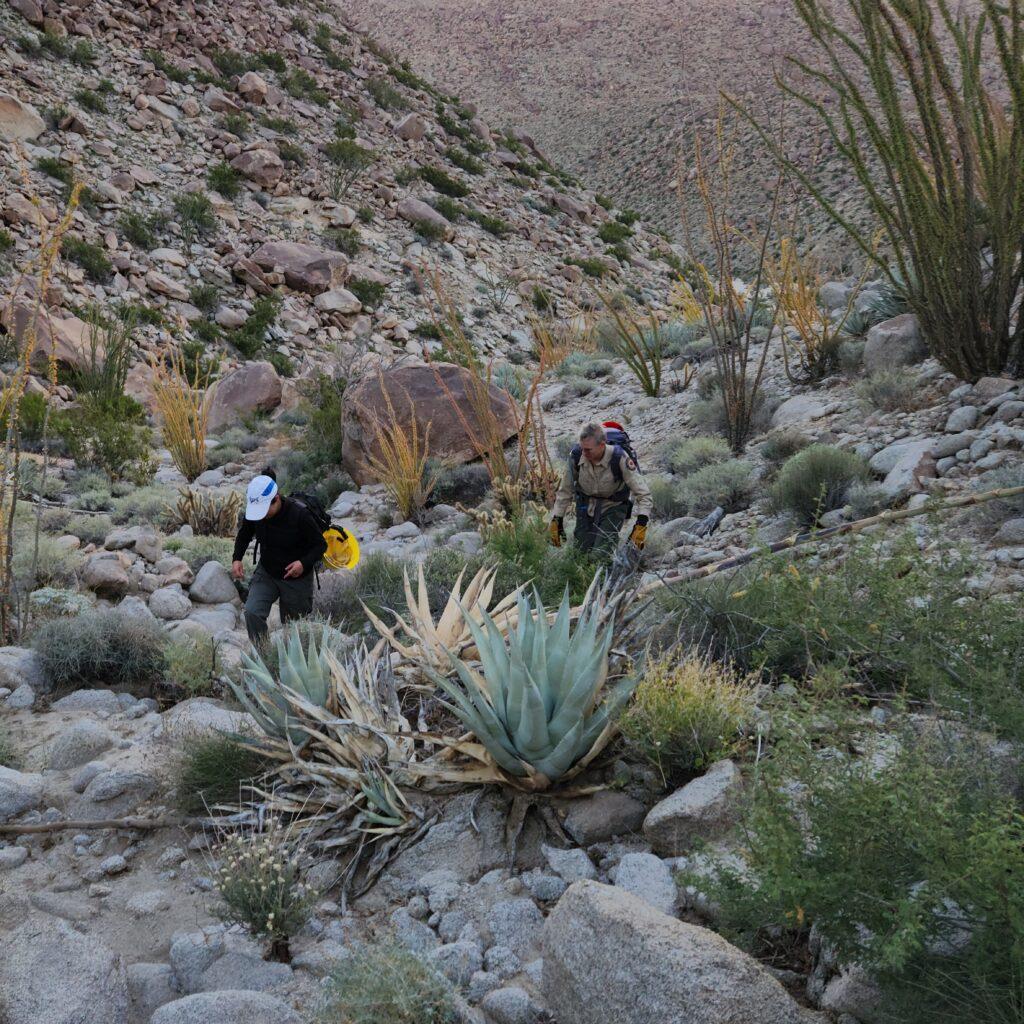

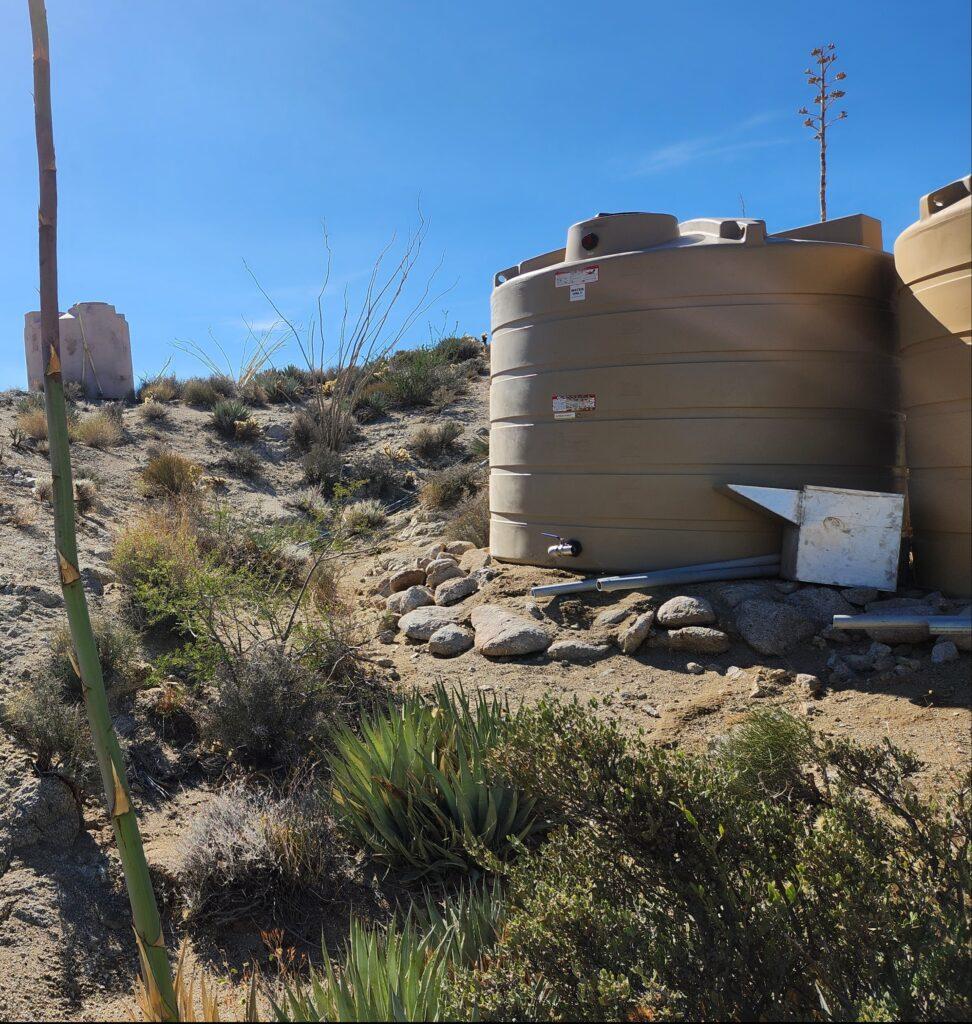
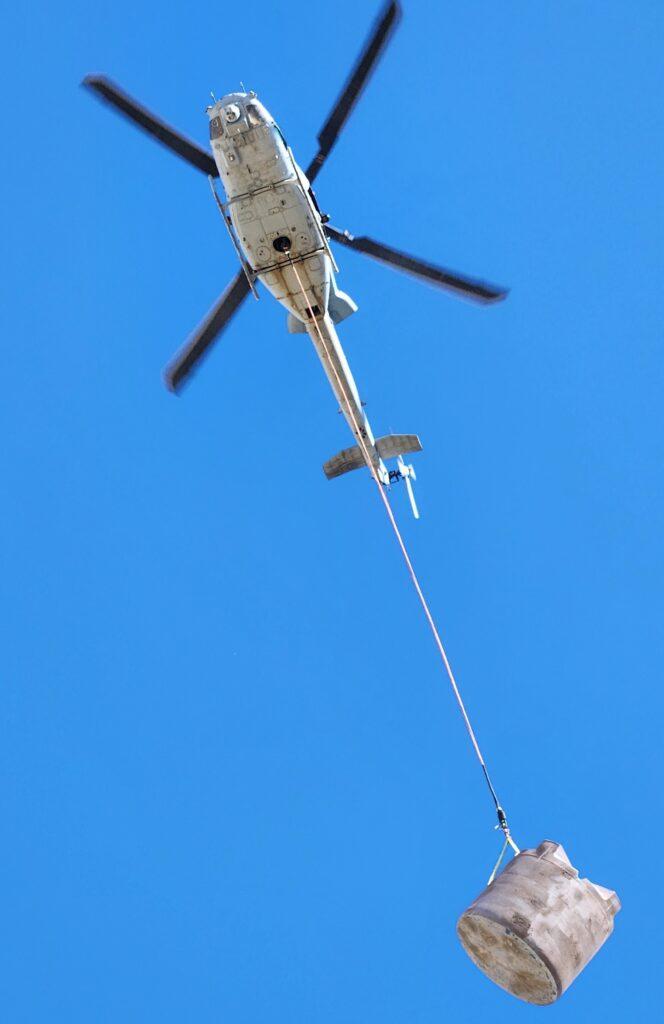
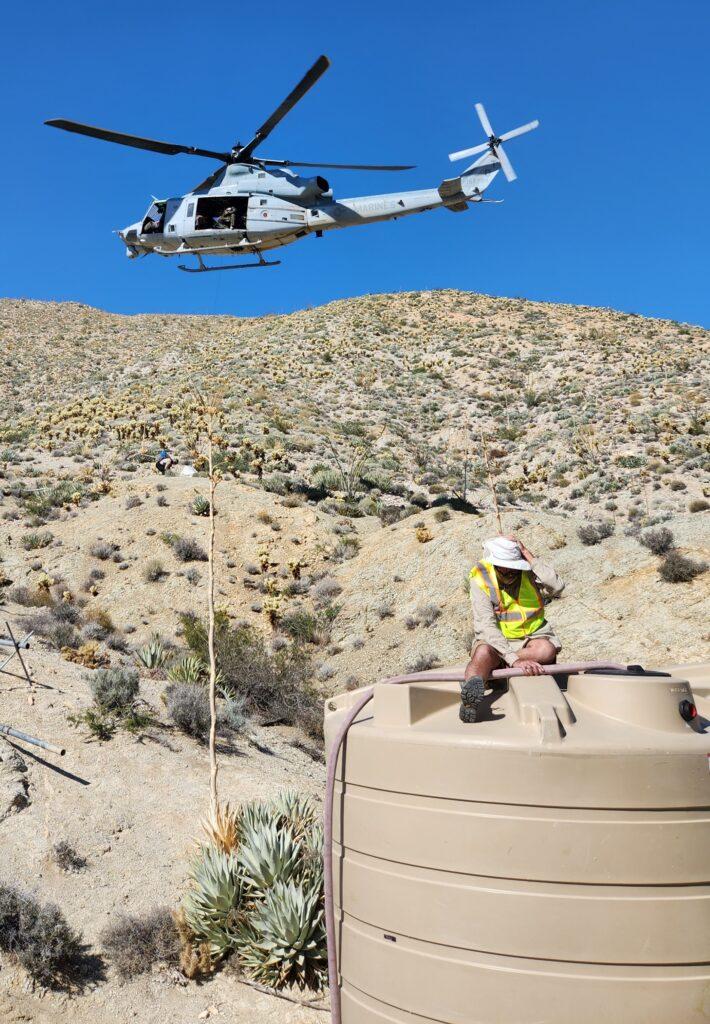
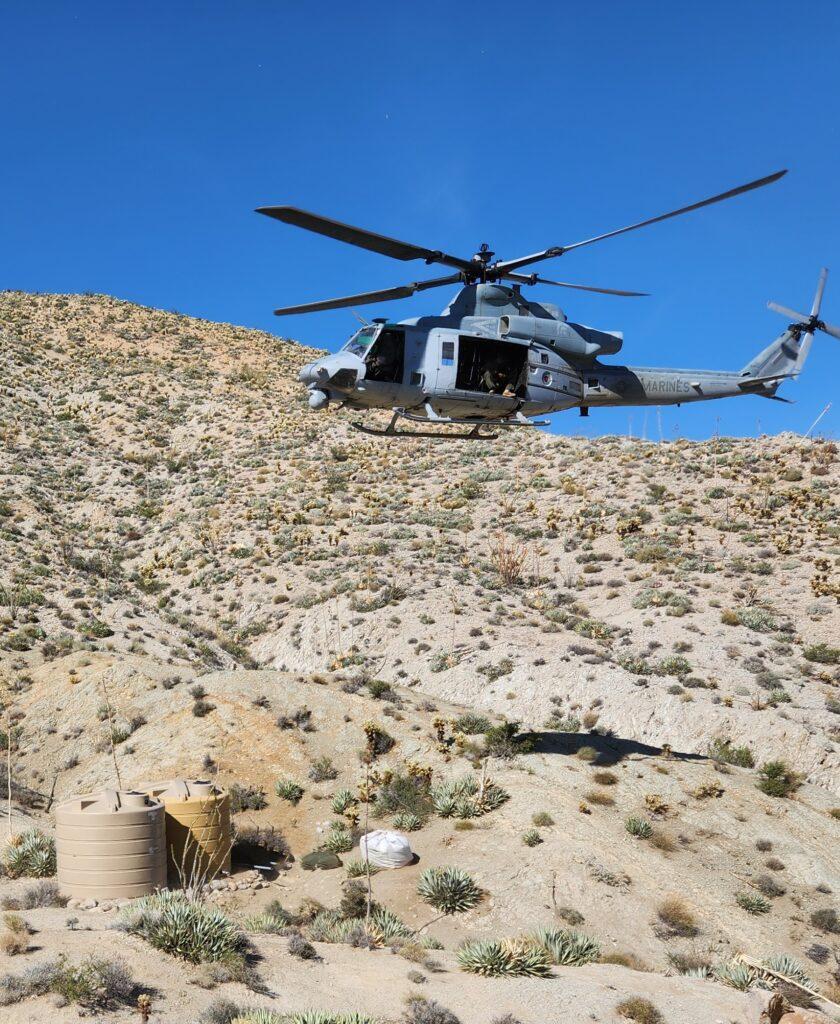
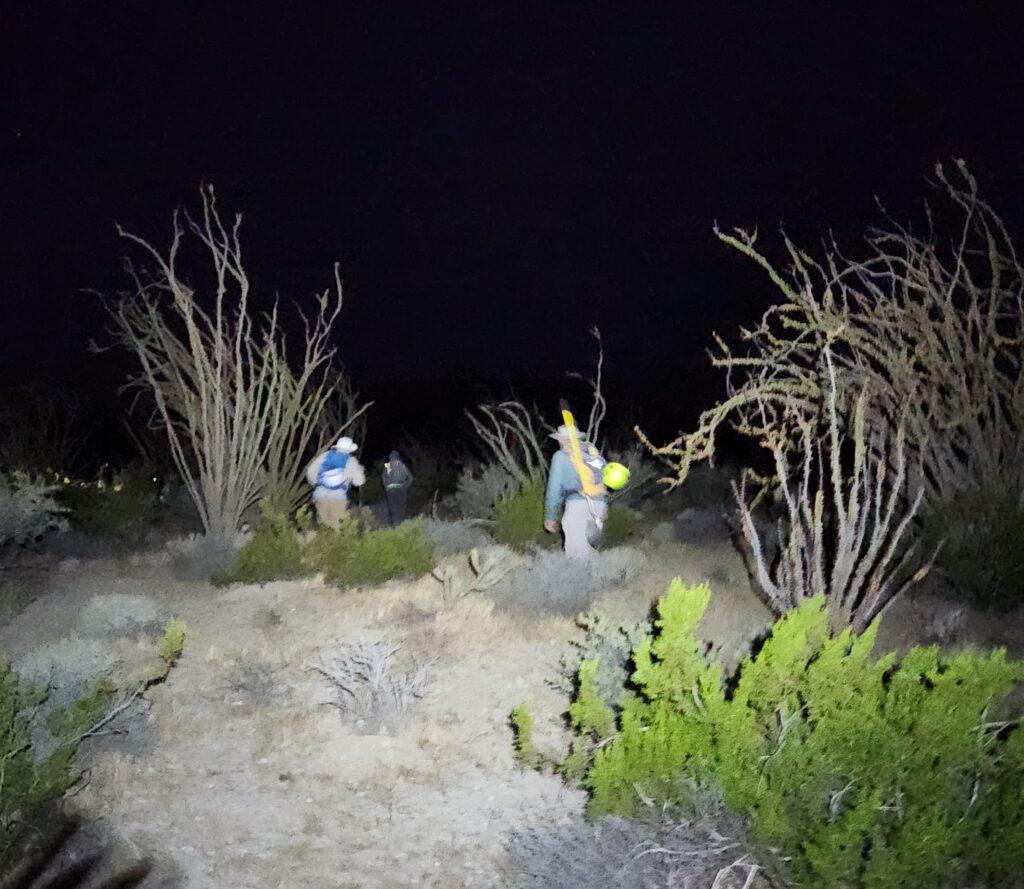
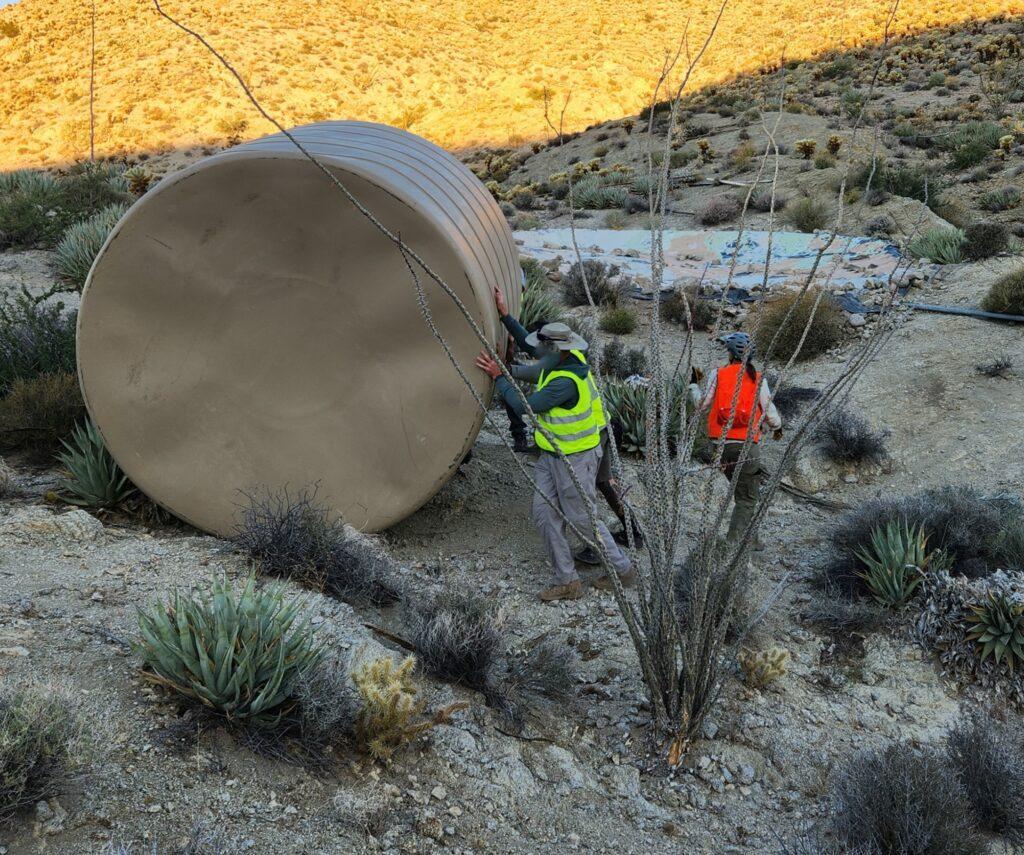
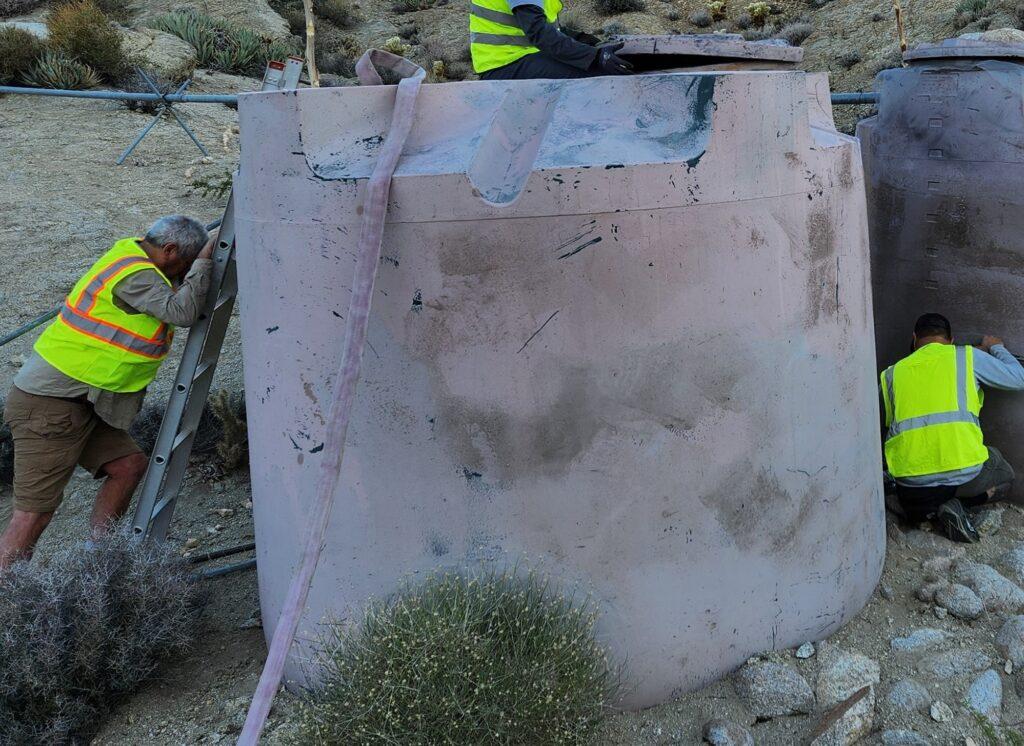
All photos taken by CDD Environmental Services Intern – John Taylor Nov. 4-5, 2023
Photo descriptions counterclockwise:
Volunteer and CDD Environmental Scientist, Shannon McNeil hike to a guzzler location.
CDD Forestry Aide Emelyn Hernandez learns all about helicopters from USMC pilots at team “meet-and-greet” before flight operations begin.
New rainwater catchment tanks in the foreground, replacing the old tank in the background.
USMC helicopters use long-lines to lift and transport rain catchment tanks to the remote locations for replacement.
Volunteers take cover and wait as helicopters lift old systems out of area.
USMC helicopters haul hand tools and plumbing equipment to remote sites.
Volunteers move empty tanks into area to set up CDFW Bighorn Sheep Biologist.
Volunteers begin the hike to the guzzler sites before dawn to be ready for early helicopter operations.
Volunteers level new tanks and begin to refill them with the water from the tanks that are being replaced.
